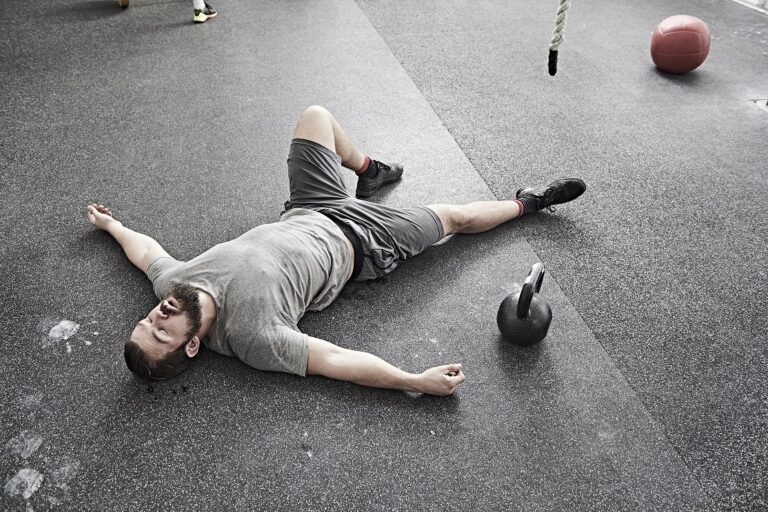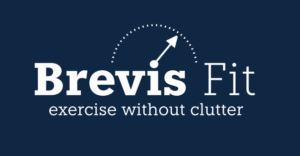Introduction
Why do so many people struggle to stick to their fitness resolutions? Millions set out on ambitious health journeys every year, yet most abandon their goals within weeks. While motivation may kickstart these resolutions, sustaining them requires far more than sheer willpower.
Understanding the root causes of this widespread failure sheds light on a critical truth: success in fitness demands more than just enthusiasm. It requires knowledge, strategy, and adaptability. By examining the common pitfalls—such as unrealistic expectations, lack of a structured plan, and misunderstanding of effective exercise techniques—we can uncover practical strategies for transforming fleeting resolutions into sustainable lifestyle changes. This article explores these essential factors and offers actionable insights to help you stay on track with your fitness journey.
Why do people fail to stick to their fitness resolutions?
Every year, countless individuals set lofty fitness resolutions with the best of intentions, yet a significant proportion of them fail to follow through. While it is hard to establish firm numbers, research shows that less than 20% of New Year’s resolutions are sustained for sufficient time to take effect [1].
Diving deeper into the mechanisms of personal goals, we see that the critical aspect of sustainability is the level of control one feels over a specific endeavor [2]. In that regard, social norms and customs play a minor role in sustaining a goal or resolution and cannot keep you motivated over the long hall. While all the social media and advertisements might be good enough to make you buy a product or enroll in a gym membership, they are not enough to make you persist in your endeavor. To continue to pursue the goal, stronger and more intrinsic motivation is required.
Therefore, getting clarity on your goal and the methods used to reach it is important. In exercise, the lack of understanding of physiology and anatomy leads to irrational workout programs that leave you exhausted, injured, and devoid of motion to continue the journey.
Another major factor is the lack of a solid plan. Many individuals jump into fitness resolutions without considering the necessary steps to achieve them. Without a structured approach, it’s easy to feel lost, which can foster frustration and inadequacy. This uncertainty often leads to inconsistency in workouts and nutrition, making it challenging to establish a routine. Consequently, individuals may abandon their resolutions altogether, feeling overwhelmed by the journey ahead.
First, understand human physiology and anatomy
Understanding the underlying mechanisms is advantageous for progressing in a long process, such as health improvement. It allows you to understand what to expect from a program and how to focus on the essentials and eliminate the fluff. In regard to improved health, the most important element is understanding our physiology and anatomy.
Physiology explains the mechanism of adaptation
Human physiology is a marvel of adaptation. The body is designed to survive, protect itself, and thrive under the right conditions. When we subject it to the right kind of stress—be it physical, mental, or even emotional—it responds by adapting. These adaptations are not instantaneous; they are gradual and deliberate, ensuring that the body is better equipped for future challenges and safeguarded against harm. From the physiology perspective, it is important to understand that our body reacts to the intensity of the stress. Not the duration of the exposure. A threshold of intensity is always required to stimulate change. Some activities and exercise programs are very inefficient at reaching that threshold. Some, like correct Exercise, are much more direct and precise.
anatomy explains the muscles involved
On the other hand, we have anatomy. This tells us how joints and muscles function. To understand what musculature to involve, we need to understand what movements they support. Dividing deeper into functional anatomy and biomechanics will give us even more insights into what movements are appropriate to fatigue and improve particular muscle groups safely and efficiently. An important message from the anatomy is that exaggerated movement through over-stretching, or too much contraction is inappropriate for high-intensity muscular contraction. This is because the muscle is not equipped to produce high contractile force in both extreme ranges. Additionally, the chances of underlying stabilizer muscles to take over is increased. This can lead to impingement and injuries, as those deep stabilizer muscles are not meant to overcome forces the big superficial muscles ought to handle.

Instead of maximum, provide the optimum
Positive adaptations, such as increased muscle strength, improved cardiovascular efficiency, and enhanced joint stability, occur when the body is exposed to optimum stimulus—not maximum. Many individuals falter here, mistakenly believing that “more is better”.
The body needs time to repair and rebuild. Think of it like a construction project: overloading the system with too much exercise or improper form is like trying to build a skyscraper overnight—it results in structural flaws, fatigue, and often injury. Correct exercise involves targeting muscles effectively while protecting the joints and ligaments, ensuring that movements are slow, controlled, and deliberate.
Slow movements, particularly under high intensity, allow muscles to work through their full range of motion without unnecessary strain on the joints. This approach optimizes muscular engagement and maintains joint health—an essential factor for longevity in fitness. High-intensity exercise done correctly eliminates the need for endless hours of training because it taps into the body’s innate capacity for efficient adaptation.
Give time for adaptation
Forcing change rarely works. Muscle growth, improved strength, and enhanced endurance require patience and consistency. Rushing the process by increasing the volume or frequency of exercise often backfires, leading to burnout or injury.
It’s critical to focus on quality over quantity. A single, well-executed high-intensity workout can yield far more significant benefits than hours of low-effort, poorly performed exercises. This approach respects the body’s need for recovery, a key element in the adaptation process.
Avoid overtraining
Overtraining is one of the most common mistakes among those seeking rapid results. It fails to deliver the desired outcomes and places undue stress on the body, depleting energy reserves and increasing the risk of joint damage. Correct Exercise allows the body to adapt positively without tipping into the dangers of overtraining.

Setting goals for your fitness journey
Goal-setting is at the heart of any successful fitness resolution. When individuals set achievable targets, they’re more likely to stay motivated and see consistent progress. This process begins with an honest assessment of one’s current fitness level. Understanding where you are now allows you to create incremental, challenging, yet attainable objectives.
Master the essentials first
Recognizing what’s realistically possible within a given timeframe is essential. While aspiring to become the next fitness icon may be an inspiring dream, a more immediate and meaningful goal could be achieving a level of health and fitness that surpasses the average while being sustainable for decades. After all, what benefit is a fleeting burst of health if it leads to injuries or long-term setbacks? A truly effective fitness journey enhances your life now and preserves your well-being for the future.
Celebrate minor improvements and steady progress
Another key to success is breaking larger goals into smaller, manageable milestones. These more minor achievements help maintain momentum and provide a sense of accomplishment. Each victory, no matter how small, reinforces positive behaviors and builds confidence in your ability to tackle larger challenges. For instance, having some tangible and realistic strength goals, like performing 10 body weight squats in a super slow fashion, can be an excellent start. Celebrating these milestones makes the journey enjoyable and strengthens your commitment to long-term fitness.
Most New Year’s resolutions focus on the immediate present, seeking to address pressing issues like a sudden weight gain or a dip in fitness. However, few of these problems truly require immediate transformation. In most cases, the challenge isn’t a crisis—it’s the result of gradual trends like declining energy levels, snug-fitting clothes, or feeling overly fatigued by daily activities. These aren’t emergencies but signs that it’s time to steer your life toward a healthier trajectory.

Follow a Routine That Aligns with Your Lifestyle and Embraces Flexibility
Flexibility is a cornerstone of any sustainable fitness routine. Life is unpredictable, and circumstances often shift—whether it’s a busy workweek, unexpected travel, or simply feeling off one day. A truly effective workout program adapts to these changes and thrives within them, ensuring your goals remain relevant and attainable regardless of external challenges.
A flexible workout program does not require constant gym attendance or rigid schedules. Instead, it prioritizes efficiency and impact. This is where Correct Exercise stands out as an exceptional example. Correct Exercise ensures that each session is profoundly effective by emphasizing a high level of effort and targeting deep muscular fatigue. Moreover, it avoids reliance on complex, hard-to-master movements, making it accessible and easy to execute even under irregular schedules.
Goal-setting is at the heart of any successful fitness resolution. When individuals set achievable targets, they’re more likely to stay motivated and see consistent progress. This process begins with an honest assessment of one’s current fitness level. Understanding where you are now allows you to create incremental, challenging, yet attainable objectives.
High level of effort and simplicity are a cornerstone of a flexible workout
The beauty of Correct Exercise lies in its dual advantages. First, because the level of effort in each session is so intense, the body requires several days to recover and grow stronger. This extended recovery period maximizes results and minimizes the frequency of workouts needed. Second, the movement patterns’ simplicity means that even if you miss a session or two, your performance won’t suffer. There’s no need for lengthy retraining or relearning—just consistent effort when you return.
This combination of high-intensity and simplicity is particularly effective when paired with a protocol like static contractions. Focusing on intense muscular fatigue within a limited timeframe makes this approach remarkably close to an ideal workout. It demands minimal time commitment while delivering maximum results, making it perfect for those with busy or unpredictable lifestyles.
A flexible program is a sustainable program
Fitness is not about perfection; it’s about persistence. The goal is not to achieve an unrealistic level of adherence but to build a routine that supports your health and fitness goals over the long haul. When your program is adaptable, impactful, and easy to integrate into your lifestyle, it becomes far easier to maintain—even through life’s ups and downs.
Remember, fitness is a journey of steady improvement, not rapid transformation. Following a routine that aligns with your life, embracing flexibility, and focusing on quality over quantity create a foundation for lasting health and long-term success.
The importance of creating a detailed plan
Creating a detailed plan is imperative for turning fitness resolutions into reality. A well-structured plan acts as a roadmap, guiding individuals through the various stages of their fitness journey. It outlines specific steps, timelines, and resources needed to achieve fitness goals. Without a clear plan, getting sidetracked or losing direction is easy, which can harm motivation and progress.
A comprehensive plan should include various elements, such as workout schedules, dietary guidelines, and rest days. By establishing a consistent routine, individuals can create healthy habits that become ingrained over time. Additionally, incorporating flexibility into the plan allows for adjustments based on personal preferences, energy levels, or unexpected life events. This adaptability is crucial for long-term adherence and success.
Moreover, setting aside time for regular evaluations of the plan is beneficial. These check-ins provide opportunities to assess progress, identify challenges, and make necessary adjustments. By reflecting on what is working and what isn’t, individuals can ensure their plans remain effective and aligned with their goals. This proactive approach enhances accountability and fosters a sense of ownership over the fitness journey, ultimately increasing the likelihood of success.

Reverse Engineer your desired long term goals
Rather than aiming for drastic short-term changes, consider taking a step back and thinking about your long-term vision. Imagine yourself 20 years from now. What kind of health and fitness outcomes would you want? Would you wish for pain-free movement, ample energy to enjoy life, or the ability to participate in physical activities you love? Once you have a clear picture of this future self, you can work backwards to create a roadmap.
Start with your 20-year goal and reverse-engineer your health plan:
- Break it Down into Milestones
Establish health and fitness objectives for 10 years, 5 years, and 1 year that align with your ultimate 20-year vision. For instance, if your 20-year goal is to have strong bones and joints supporting an active lifestyle, your 10-year goal could be building consistent strength training habits. Your 5-year goal might involve mastering proper form and learning techniques to avoid injury, while your 1-year goal could prioritize integrating a sustainable exercise routine that fosters joint health. - Shift Your Perspective
Viewing your fitness journey through this long-term lens changes how you approach your program. Instead of seeking quick fixes or transformations, you’ll focus on sustainable progress that compounds over time. This approach immediately reduces the pressure to achieve dramatic results, helping you prioritize practices yielding lasting benefits. - Plan for Adaptation
A long-term vision acknowledges that life will bring challenges and changes. By creating a roadmap that allows for flexibility, you ensure that your fitness journey can evolve with you. For example, if an injury or a busy season disrupts your progress, you can adjust without losing sight of the big picture.
By focusing on a gradual reversal of unhealthy trends and designing a long-term plan, you not only set yourself up for realistic success but also create a lifestyle that supports longevity and vitality. Resolutions rooted in long-term thinking shift the focus from immediate gratification to sustained well-being, allowing you to build a legacy of health that your future self will thank you for.
Focus on the minimum effective dose
An effective fitness regime combines increases in muscular strength, bone density, and heart health. Many programs, however, focus on one aspect exclusively, leading to a comprehensive workout plan and a crowded schedule. If you are beginning your exercise journey, follow the 80/20 rule and the concept of minimum effective dose. Instead of enrolling in some complicated and comprehensive workout plans, try to first go for a workout style that can give you as many benefits at once. For that, correct Exercise is perfect, as it is a very efficient approach to fatiguing muscles, strengthening the cardiovascular system, and improving bone density all at once [6], [7], [8], [9], [10].
Track and monitor your progress
Tracking progress is a powerful tool in any fitness journey. It allows individuals to see tangible evidence of their efforts, significantly boosting motivation. Maintaining a record of workouts, nutrition, and other relevant metrics, people can identify trends, recognize improvements, and celebrate successes. This process not only reinforces positive behaviors but also helps to pinpoint areas that may require adjustments.
Staying accountable is another crucial aspect of achieving fitness goals. This can be accomplished through various means, such as workout buddies, online communities, or fitness apps. Sharing goals with others creates a sense of responsibility, making it more likely that individuals will stick to their plans. Additionally, accountability partners can provide encouragement, support, and constructive feedback, creating a more enriching fitness experience.
Furthermore, setting up regular check-ins, whether with oneself or with a partner, can help maintain focus and commitment. These sessions can be opportunities to review progress, discuss challenges, and recalibrate goals as needed. By prioritizing tracking and accountability, individuals can foster a supportive environment that empowers them to stay on course and achieve their fitness resolutions.

Conclusion
In conclusion, fitness resolutions often fail due to a lack of understanding, unrealistic expectations, and insufficient planning. To achieve lasting success, you should develop a deeper understanding of human physiology and anatomy, enabling them to design effective, safe, and goal-oriented workout programs. The key lies in prioritizing quality over quantity, focusing on optimal—not maximal—effort, and allowing the body adequate time to adapt and recover.
Moreover, setting achievable goals and celebrating incremental progress fosters motivation and consistency. A flexible routine that aligns with one’s lifestyle ensures sustainability, even amid unpredictable challenges. By emphasizing simplicity, intensity, and adaptability—hallmarks of approaches like Correct Exercise—fitness can evolve from a fleeting resolution into a lifelong commitment.
Fitness is not a sprint but a marathon of steady, purposeful improvement. When approached with patience, knowledge, and a clear plan, it can lead to profound physical and mental well-being, enriching life for years to come.
Literature
[1] J. C. Norcross and D. J. Vangarelli, “The resolution solution: Longitudinal examination of New Year’s change attempts,” J. Subst. Abuse, vol. 1, no. 2, pp. 127–134, Jan. 1988, doi: 10.1016/S0899-3289(88)80016-6.
[2] P. Sheeran and T. L. Webb, “From Goals to Action,” in Goal-Directed Behavior, Psychology Press, 2011.
[3] S. Knez, “The Purpose Of Exercise,” BrevisFit. Accessed: Apr. 24, 2021. [Online]. Available: https://brevis-fit.com/the-purpose-of-exercise/
[4] S. Knez, “Defining Exercise: Theoretical Concepts,” BrevisFit. Accessed: Apr. 21, 2023. [Online]. Available: https://brevis-fit.com/defining-exercise-theoretical-concepts/
[5] S. Knez, “Defining Exercise: The Intensity – Safety Quadrant,” BrevisFit. Accessed: May 30, 2021. [Online]. Available: https://brevis-fit.com/the-intensity-safety-quadrant/
[6] S. Knez, “The Impact of Exercise on Bone Density and Overall Wellness,” BrevisFit. Accessed: Dec. 31, 2024. [Online]. Available: https://brevis-fit.com/the-impact-of-exercise-on-bone-density-and-overall-wellness/
[7] S. Knez, “How To Boost Your Heart Health Through Exercise,” BrevisFit. Accessed: Mar. 23, 2024. [Online]. Available: https://brevis-fit.com/how-to-boost-your-heart-health-through-exercise/
[8] S. Knez, “Exercise Progress Part 1: Our Guide For Long Term Success – BrevisFit.” Accessed: Dec. 06, 2021. [Online]. Available: https://brevis-fit.com/exercise-progress-p1/
[9] S. Knez, “Exercise progress part 3: Muscular Strength,” BrevisFit. Accessed: Apr. 01, 2022. [Online]. Available: https://brevis-fit.com/exercise-progress-part-3-muscular-strength/
[10] S. Knez, “Exercise Progress Part 2: Changes in Body Shape,” BrevisFit. Accessed: Dec. 08, 2021. [Online]. Available: https://brevis-fit.com/exercise-progress-part-2-changes-in-body-shape/

